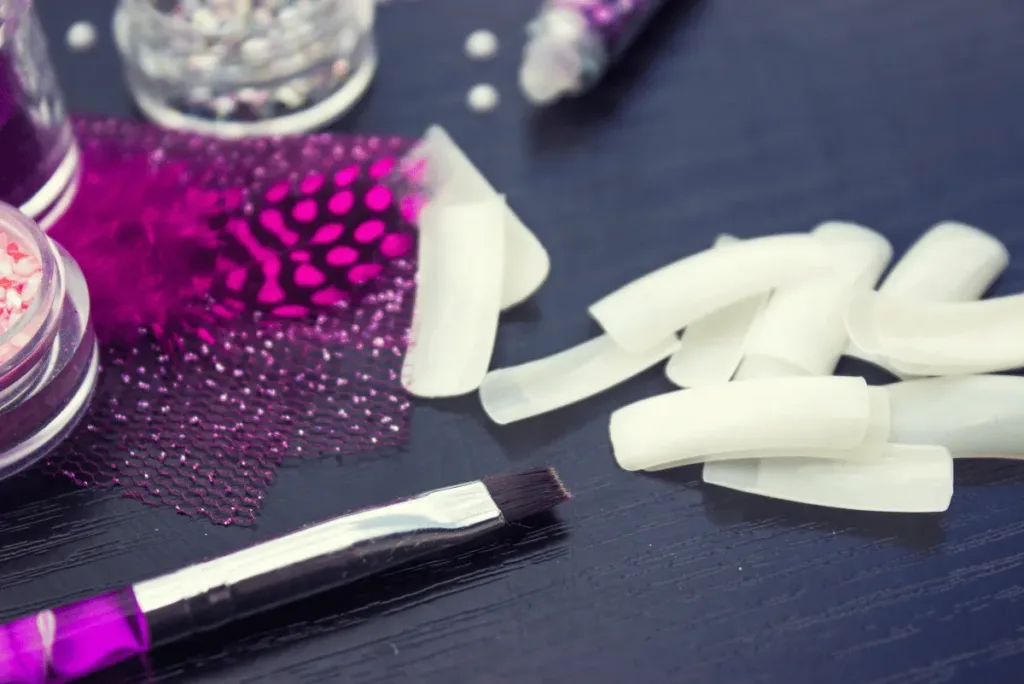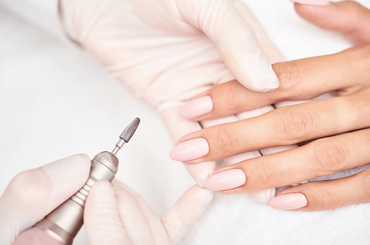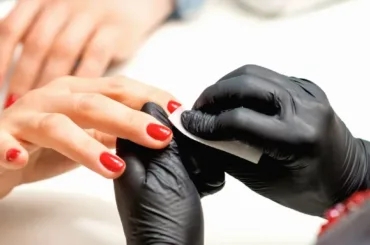Fake nails are a popular way to enhance the appearance of your natural nails and create various nail art designs. However, fake nails can also be expensive and wasteful, especially if you only use them once. So, in order to save money and resources can you reuse fake nails?
Based on my experience, yes, you can reuse fake nails, especially if they were carefully and gently removed without causing damage. However, the reusability largely depends on the type and quality of the fake nails.
While some may withstand multiple applications, others may not retain their original shape or adhere properly after removal. It’s crucial to follow proper removal techniques and consider the material of the fake nails to maximize the chances of successful reuse.
In this blog post, I’ll cover how to remove press-on nails to make them reusable, and the factors influencing reusability. Furthermore, I’ll explain how many times you can reuse fake nails and the risks associated with reusing .
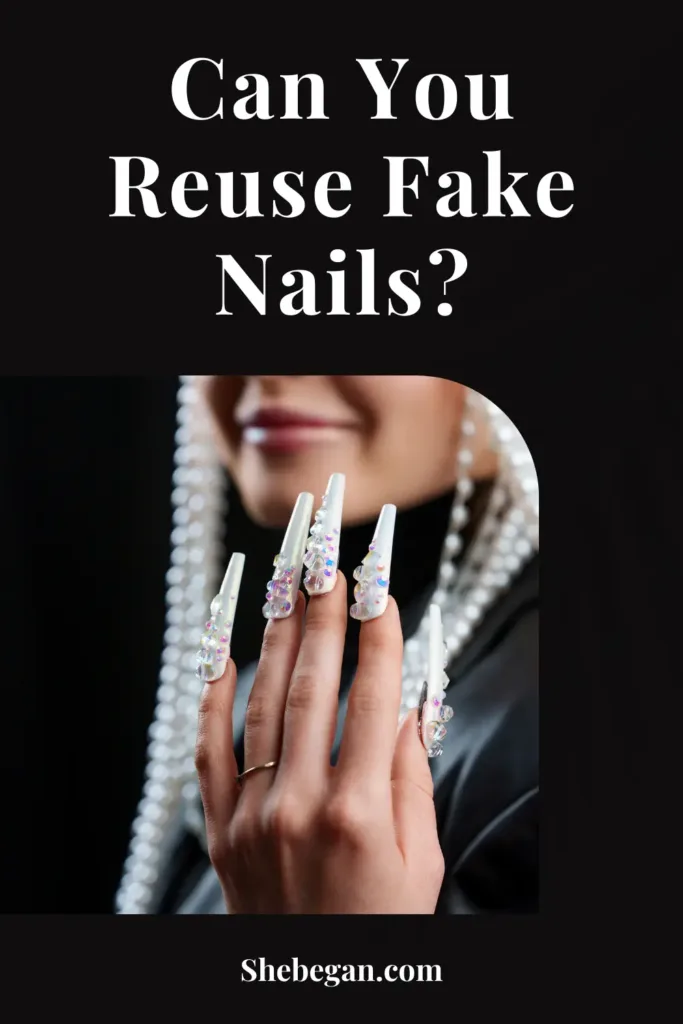
How to Remove Press-on Nails to Reuse Them
You need to be careful while removing your fake nails to make them reusable;
1. Gentle removal process
Preserving the integrity of press-on nails for reuse begins with a gentle removal process. Carefully peel or lift the nails from the sides rather than forcefully pulling from the top. This minimizes stress on the adhesive and the nail itself.
2. Warm soak method
Soaking your fingers in warm, soapy water can help loosen the adhesive, making removal easier. After soaking for a few minutes, gently lift the press-on nails from the sides. This method is particularly effective for adhesive tabs.
3. Acetone-free nail polish remover
For press-on nails with adhesive residue, an acetone-free nail polish remover can be applied using a cotton ball. Let it sit on the nails for a few minutes to dissolve the adhesive, making it easier to remove the nails without damage.
4. Dental floss or orange stick
Utilize dental floss or an orange stick to gently lift press-on nails from the sides. Slide the dental floss or stick underneath the nails to loosen the adhesive without causing stress on your natural nails.
5. Oil-based removers
Oil-based removers, such as olive oil or cuticle oil, can be effective in breaking down the adhesive. Apply the oil around the edges of the press-on nails, allowing it to seep underneath and facilitate easy removal.
6. Patience is key
Regardless of the method chosen, patience is crucial. Rushing the removal process increases the risk of damaging both the press-on nails and your natural nails. Take your time, and if resistance is encountered, consider reapplying a warm soak or oil-based remover.
7. Cleaning and storing
After successful removal, clean any residual adhesive from the press-on nails. Store them in a safe container or on a press-on nail holder, ensuring they maintain their shape for future use.
8. Inspection for reusability
Before reapplying, inspect the press-on nails for any damage or loss of shape. Address any issues, such as bent edges or adhesive buildup, to maximize their longevity for subsequent use.
How Many Times Can You Reuse Fake Nails?
Fake nails can be reuse up to 5 times depending on the quality of the nails, the type of adhesive used, and the care taken during removal. While you can reuse fake nails multiple times with proper maintenance, it’s common for their effectiveness and appearance to diminish after a few applications. In all, regular inspection and adherence to proper removal techniques are essential for maximizing their reusability.
Factors Influencing Reusability
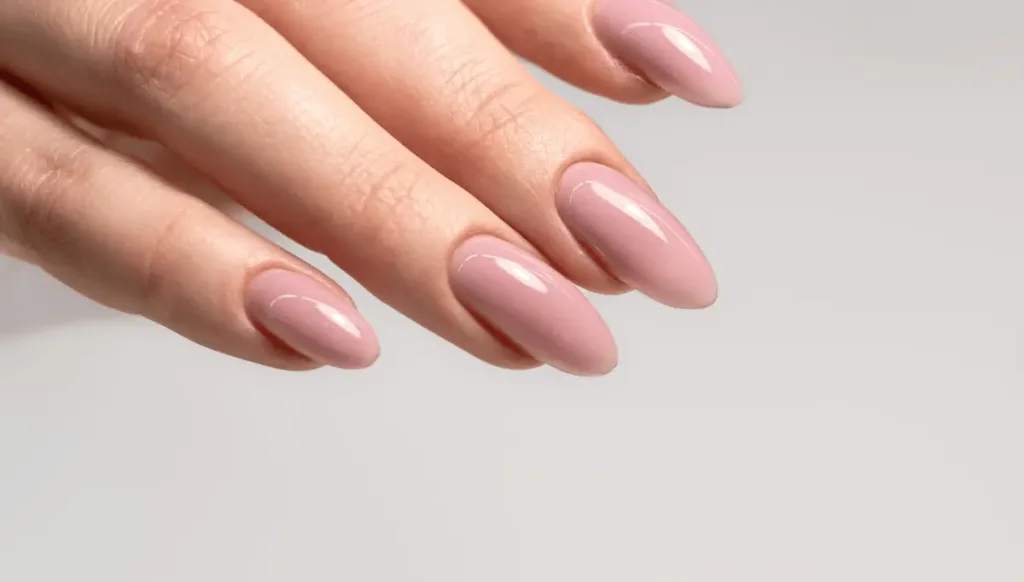
Reusing fake nails is not impossible but there are factors that can affect the process. Some of them are as follows;
1. Quality of fake nails
The inherent quality of fake nails significantly influences their reusability. Higher-quality materials and construction often result in increased durability and a greater number of possible uses.
2. Type of adhesive
The type of adhesive used during application plays a crucial role in determining reusability. Some adhesives are designed for single use, while others, especially those used with press-on nails, are formulated for multiple applications.
3. Careful removal techniques
Gentle and careful removal of fake nails is paramount for their reusability. Rough or hurried removal can damage the nails, making them less likely to adhere properly in subsequent uses.
4. Maintenance between uses
Proper maintenance, including cleaning and storing fake nails correctly between uses, contributes to their longevity. Neglecting maintenance can lead to deterioration in both appearance and adhesiveness.
5. Individual nail health
The natural health of an individual’s nails also influences reusability. Nails that are weak or damaged may not provide an optimal surface for the fake nails to adhere to, affecting their ability to be reused.
6. Frequency of use
The frequency with which fake nails are applied and removed can influence their reusability. Those used infrequently may maintain their quality for a longer duration compared to nails subjected to more frequent applications.
7. Overall wear and tear
The cumulative wear and tear experienced by fake nails during each use contribute to their overall lifespan. Constant bending, exposure to harsh substances, or accidental damage can diminish reusability.
Potential Risks of Reusing Fake Nails
Here are a few risks of reusing fake nails;
1. Adhesive residue can buildup overtime
Reusing fake nails may lead to the accumulation of adhesive residue on both the natural nail and the fake nail surface. This buildup can affect the adherence of the nails in subsequent applications and may necessitate more thorough cleaning.
2. Weakening of materials
With each use, fake nails may experience gradual wear and tear, potentially leading to the weakening of the materials. This can result in changes in shape, flexibility, or overall structural integrity, impacting their ability to be securely reapplied.
3. Risk of infection
Reusing fake nails increases the risk of trapping moisture and bacteria between the natural and artificial nails. This trapped environment can create a breeding ground for fungal or bacterial infections, especially if proper hygiene practices are not diligently followed.
4. Nail damage
Frequent application and removal of fake nails, especially if not done with utmost care, can lead to damage to the natural nails. This may manifest as thinning, peeling, or weakening of the natural nail structure.
5. Allergic reactions
Adhesives or materials used in fake nails may trigger allergic reactions in some individuals. Repeated exposure increases the likelihood of developing sensitivity or allergies to the components, resulting in skin irritation or other allergic responses.
6. Difficulty in proper removal
Repeated use of fake nails may make their removal more challenging. Stubborn adhesives or weakened materials can complicate the removal process, potentially causing stress or damage to the natural nails.
7. Uneven adherence
Over time, the adherence of fake nails may become uneven due to changes in the nail bed or alterations in the shape of the artificial nails. This can result in a less secure fit and affect the overall aesthetic appearance.
8. Dehydration of natural nail health
Continual use of fake nails without adequate breaks or proper care can impact the overall health of natural nails. Conditions such as nail thinning, dehydration, or infections may arise, compromising the well-being of the natural nails.
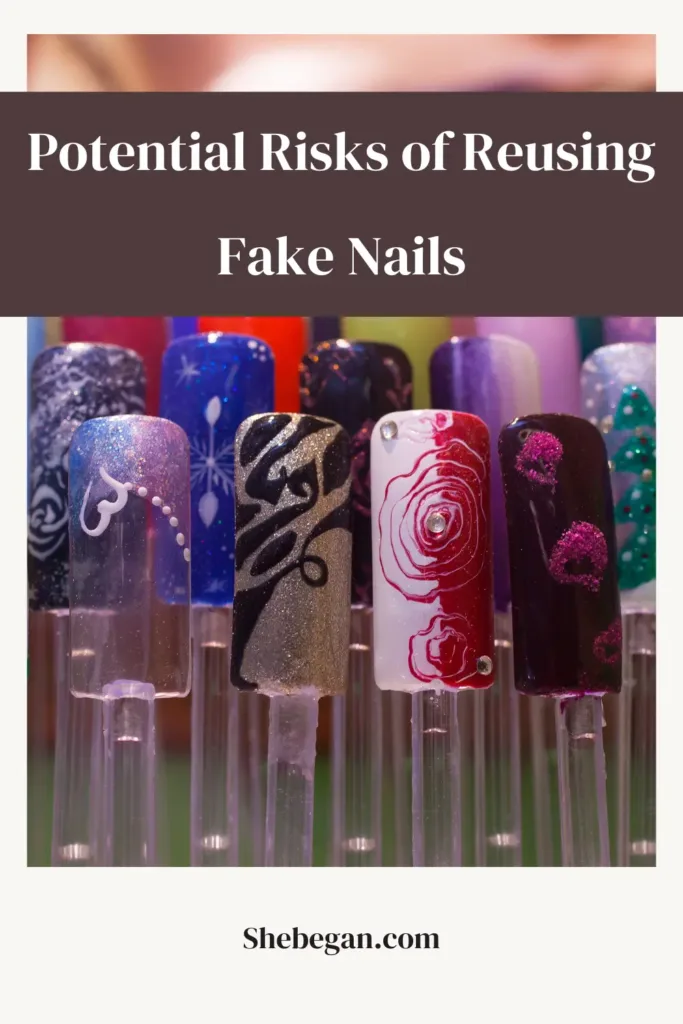
Summary
You can reuse fake nails for as much as 5 times, especially if the nails are of high quality. However, while quality, careful removal, and maintenance practices can extend the reusability of fake nails, you must remain vigilant about the potential drawbacks.
Risks such as adhesive residue buildup, weakening of materials, the risk of infection, and the possibility of allergic reactions underscore the importance of adopting responsible hygiene and care habits. Try out the tips in this article to care for yours nails and elongate their lifespan.

